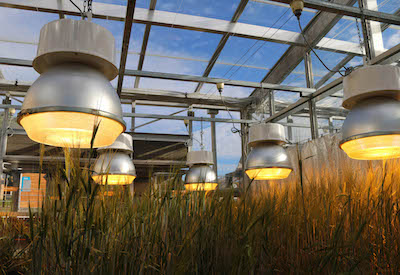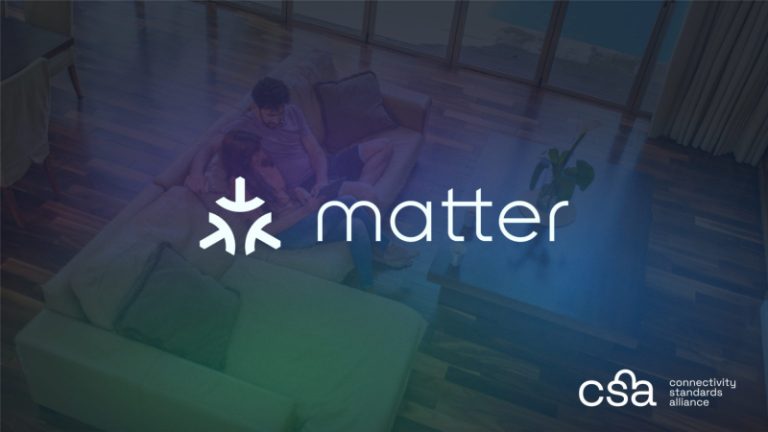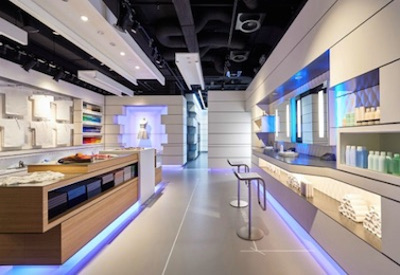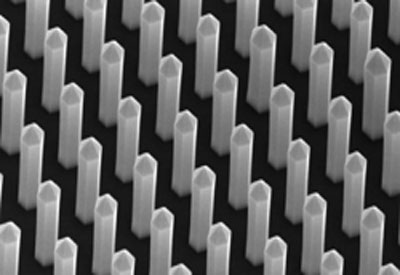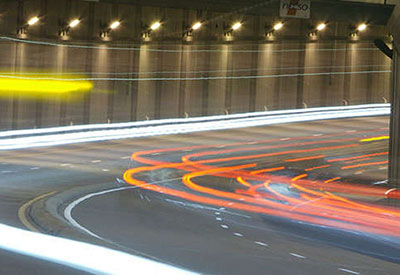IIoT Talks: Navigant’s Noah Goldstein and Lighting as a Service, Part 2
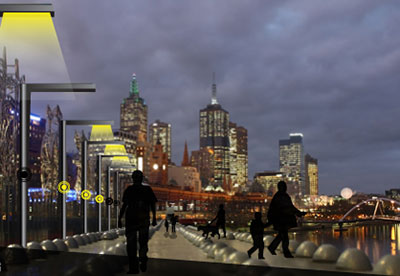
Our discussion with Noah Goldstein, a research director at Navigant Research*, continues as we talk about the role of lighting in both smart building and smart city applications. In Part 1, we covered some drivers for LED lighting, the emergence of lighting as a service, and the prospects for IoT convergence.
Echelon: In your role at Navigant Research, you lead the Smart Buildings program. What’s new about the role of lighting in smart buildings?
I now view lighting as the beachhead of the next generation of buildings. People who operate buildings have been doing largely the same thing for 100 years, which is providing standard services. Now, lighting is becoming a platform for other applications, such as security. It’s creating an opportunity to provide services to the people in buildings that we couldn’t even dream of 30 years ago. These new services are going to make building space more valuable, and ideally make the space more effective and help people be more productive.
Echelon: Are you talking about the Internet of Things here?
It’s a parallel thrust to the IoT, but different. Most of the IoT has been focused on the actual components of buildings, including lighting being integrated through the Internet. This is different. It’s kind of turning IoT on its head, to say that what you’re really doing is using this ubiquity of access provided by lighting systems to deliver anything to anybody, depending on what you want.
We’re shifting from an area and a time when lighting was ubiquitous and always on, to lighting services that are ubiquitous but tailored to specific needs. So for instance, if you have a warehouse with automated robots filling orders, you don’t need to have the lights on all the time. But you do need to tailor it so that if someone is walking the floor, the lighting will come on as appropriate.
Having said that, though, lighting is definitely going to be the first system to embrace the IoT and serve the overall ‘appification’ of building automation control.
Echelon: There’s been a lot of talk lately in the building automation world about building optimization. What are your thoughts on building optimization?
In my mind, true building optimization is where buildings can be operated to their best performance. But that goal is challenging now, because most building automation systems are siloed by function, even if they have interactive aspects. For example, if you leave the lights on all day, you will increase the heat in a building. If you seal a room off for security reasons, you’ll also reduce the amount of light and HVAC and air that goes into that room.
I think we’re going to see a step-by-step push toward what I call operational efficiency, rather than optimization. I think there’s agreement that operational efficiency is relevant and important, but everyone has different definitions for what it actually means and how it’s applied. From a network security person’s perspective, a secure network runs well when there are no infractions. From a building facility management standpoint, a building runs well when there are no calls from tenants complaining that it’s too hot or too cold. From a building owner’s perspective, a building runs well when every space is filled and they’re making money.
But those are all different goals. What’s needed is a convergence of the definition of what operational efficiency really means that goes beyond simply the facilities manager. It needs to include the whole value and information chain. This is especially true if you have a CIO overseeing the IT backbone and a portfolio manager managing the space and the CFO managing the energy bill. They all have different goals.
Echelon: Earlier in our conversation, you talked about the generational shift in facilities management, with current facilities managers reaching retirement age and their replacements being from the smartphone and app generation. Does that also play into this whole issue of operational efficiency?
Absolutely, yes. The fundamental job of building facilities operations is changing. The new facilities managers need to become experts in networking and security and devices and different communications protocols. They’re going to have to respond more to the kinds of services that tenants want, as opposed to just providing the same things they’ve always provided.
That’s one reason I think the idea of real estate companies taking on IT management in buildings is really interesting. Instead of having the building facilities manager in the basement, you might have the building IT guy in the basement managing the IT for all the different clients in a building. Then, the real estate companies can sell services such as cell phone boosters and Wi-Fi as part of the lease, instead of each tenant managing their own Wi-Fi and such.
This ties in with the rise of the service model. If you’re a tenant in a commercial office building, you just want your office to run as well as it can for your people. And the real estate companies are recognizing all these services as potential revenue streams.
Echelon: So far we’ve been talking about smart buildings and mainly indoor lighting issues. Are similar things going on with outdoor lighting?
When it comes to outdoor light, there are two threads. There’s the ancillary outdoor lighting that supplies light around buildings, which is owned by facilities. That outdoor lighting will be brought under the auspices of what’s happening inside the buildings. So if there’s a garage or parking lot adjacent to the building, the lighting there will be transitioned along with the building’s indoor lighting.
Then there’s the outdoor lighting infrastructure that’s owned by cities. Just as indoor lighting is the beachhead for smart buildings, intelligent outdoor lighting is also the beachhead for a smart city. It’s easy to envision a street lamp as a sensor as well as a provider of light. A number of cities are already recognizing that taking an integrated tuned lighting approach is a great way to save money.
Convergence as we’re discussing it really means just viewing outdoor lights as sensors that can provide better services. For city lighting and street lights, there are security applications, for instance, that are relevant and that can be combined with lighting. Multiple systems can be converged on a lighting backbone. A city can easily make itself wireless if it thinks of its lamp posts as access points.
What’s a bit different in cities, though, is that the acceptance level will vary depending on the country and region and the culture of each city. For example, some cities in Asia are fully committed to having Wi-Fi everywhere. In these places, using an outdoor lighting fixture as a resource to provide multiple services, including lighting, is a natural fit. Other cities have greater concerns about privacy and what that means for people.
Echelon: What are some of the other services that smart cities could deliver using their street lighting systems?
A city can create a smart parking system based on its street lamps, embedding sensors to sense whether a car is present or absent in any particular parking space. Cities can also explore things like noise monitoring through lamp posts, although that does raise some security questions. But the lamp posts can also be used for environmental monitoring and studies, such as temperature and humidity, to provide better awareness of the local conditions.
Street lamps can be used to sense whether there’s snow on the ground. In some areas, that’s really critical for providing appropriate services. These are all services that can be embedded in a street lamp.
Echelon: Where do you see all of this heading in the future?
What we’re seeing a bit now, but what I would love to see more of, is not thinking about lighting as just providing light, but providing a way for spaces to be used in the ways that people want to use them.
It’s a bit simpler to think about outdoor lighting. Generally, people just want regular flat light tuned to the right light level.
For indoor spaces, I’m really excited about people thinking about lighting as a palette. As a way to bring new kinds of tones and flavours into a room that make what people need to do in that space more effective.
A lot of the integration happening now, such as between lighting and HVAC controls, is through cloud-based services. But there are a lot of building managers and owners who do not want cloud-based control at this point; they want everything to be controlled locally. I don’t know how long that’s going to persist.
But as I’ve said before, integrated controls are happening now, and adoption will increase over the next 10 years. Buildings will need to report how much energy they use. Tenants will demand higher-quality services. The technology will have to get easier to use and easier to interact with. User interfaces really need to be made simple and clear. Everything needs to be plug and play, to make lives easier for the people operating the systems as much as for the people who are the end users of the systems.
This article first appeared as a blog post published by Echelon. IIoT Talks is a conversation between industry luminaries and Echelon Corporation about the opportunities of the Industrial Internet of Things (IIoT) market. Echelon Corporation develops open-standard control networking platforms, delivering all the elements necessary to design, install, monitor, and control industrial-strength ‘communities of devices.’ Read other Echelon blogs: http://feeds.feedblitz.com/echelon. Learn more about Echalon: http://echelon.com/company.
* Dr. Noah Goldstein, PhD, LEED AP, is research director within Navigant Research’s Custom Research group, with a focus on cleantech and building technologies innovation in the market. He focuses on strategic engagement in topics of energy efficiency, building energy management, and applied sustainability. As the director of building research, he led research on Zero Energy Buildings, Energy Management Systems in Commercial Buildings, and corporate strategy.
IIoT Talks is a conversation between industry luminaries and Echelon Corporation about the opportunities of the Industrial Internet of Things (IIoT) market. Echelon shares highlights of these conversations via the company blog. If you are interested in participating, please send an email to klippe@echelon.com


